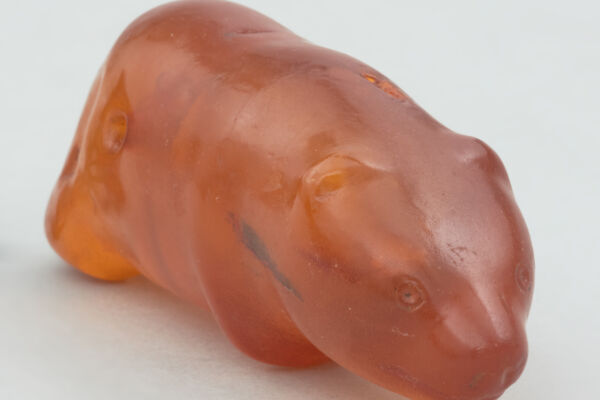In the late 19th century, a bear-shaped amber dating back thousands of years was unearthed in the northern Polish city of Słupsk. It is believed to be a talisman of Stone Age hunters, resembling a cute gummy bear in appearance but carrying significant historical importance.
The National Museum in Szczecin, Poland, showcased this intricately carved amber bear on its website, providing insights into its origins. According to the museum, in 1887, miners in Słupsk discovered this unique piece of amber while excavating peat. It was later handed over to the archaeological society in Szczecin and eventually curated by the museum.
Measuring 10.2 cm in length and 3.4 cm in width, the amber can be traced back to the Mesolithic or Proto-Neolithic period, approximately between 9,600 and 4,100 BC.
The uniqueness of this amber lies in both its material and the bear’s imagery. Animal depictions were rare in the art of the Mesolithic and Proto-Neolithic eras, with amber-made animals being exceptionally uncommon.
People of that time were mostly hunter-gatherers, and animal figurines, like the one believed to be worn as a talisman around their necks, were often associated with totemic and guardian spirits.
In the early to middle Holocene in Pomerania, a historical region in Central Europe along the southern coast of the Baltic Sea, the bear, the most powerful and dangerous animal in the forest, might have been seen as an embodiment of natural forces, evoking fear and reverence among hunter-gatherer communities.
The amber bear described above has always piqued people’s interest, especially among the younger generation. In a naming contest, children chose a name for this amber piece, with “Słupcio” emerging as the winning name, becoming its official title.
According to Live Science, Słupcio has legs that are essentially protrusions and cannot stand independently, but its head is intricately carved, featuring ears, mouth, nostrils, and eyes.
A hole runs through the center of the figure, likely used by ancient hunters to attach a strap for suspension or carrying the figurine.
At the end of World War II, the Germans took Słupcio and many other ancient artifacts out of Poland, storing it in the Stralsund Museum in Germany until it was returned to Szczecin in 2009.
During its time in Germany, experts studied Słupcio, referring to it as “Bernsteinbär” (amber bear) and concluding that all carvings are ancient. However, due to its accidental discovery over a century ago, there are differing opinions among experts regarding its exact creation time.
Amber, a natural material resembling stone in appearance but becoming semi-translucent when polished, emits a fragrant aroma when burnt. The carving of a bear on amber may have been believed to imbue the material with magical powers, making Słupcio a potent talisman from the Stone Age.

